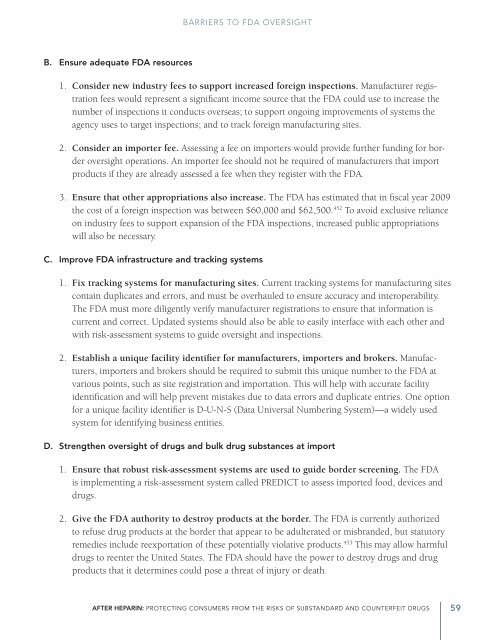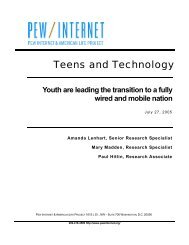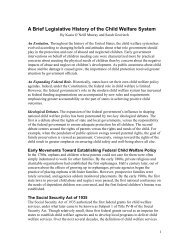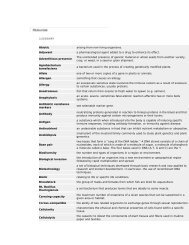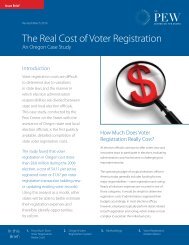After Heparin: - The Pew Charitable Trusts
After Heparin: - The Pew Charitable Trusts
After Heparin: - The Pew Charitable Trusts
Create successful ePaper yourself
Turn your PDF publications into a flip-book with our unique Google optimized e-Paper software.
BARRIERS TO FDA OVERSIGHT<br />
B. Ensure adequate FDA resources<br />
1. Consider new industry fees to support increased foreign inspections. Manufacturer registration<br />
fees would represent a significant income source that the FDA could use to increase the<br />
number of inspections it conducts overseas; to support ongoing improvements of systems the<br />
agency uses to target inspections; and to track foreign manufacturing sites.<br />
2. Consider an importer fee. Assessing a fee on importers would provide further funding for border<br />
oversight operations. An importer fee should not be required of manufacturers that import<br />
products if they are already assessed a fee when they register with the FDA.<br />
3. Ensure that other appropriations also increase. <strong>The</strong> FDA has estimated that in fiscal year 2009<br />
the cost of a foreign inspection was between $60,000 and $62,500. 452 To avoid exclusive reliance<br />
on industry fees to support expansion of the FDA inspections, increased public appropriations<br />
will also be necessary.<br />
C. Improve FDA infrastructure and tracking systems<br />
1. Fix tracking systems for manufacturing sites. Current tracking systems for manufacturing sites<br />
contain duplicates and errors, and must be overhauled to ensure accuracy and interoperability.<br />
<strong>The</strong> FDA must more diligently verify manufacturer registrations to ensure that information is<br />
current and correct. Updated systems should also be able to easily interface with each other and<br />
with risk-assessment systems to guide oversight and inspections.<br />
2. Establish a unique facility identifier for manufacturers, importers and brokers. Manufacturers,<br />
importers and brokers should be required to submit this unique number to the FDA at<br />
various points, such as site registration and importation. This will help with accurate facility<br />
identification and will help prevent mistakes due to data errors and duplicate entries. One option<br />
for a unique facility identifier is D-U-N-S (Data Universal Numbering System)—a widely used<br />
system for identifying business entities.<br />
D. Strengthen oversight of drugs and bulk drug substances at import<br />
1. Ensure that robust risk-assessment systems are used to guide border screening. <strong>The</strong> FDA<br />
is implementing a risk-assessment system called PREDICT to assess imported food, devices and<br />
drugs.<br />
2. Give the FDA authority to destroy products at the border. <strong>The</strong> FDA is currently authorized<br />
to refuse drug products at the border that appear to be adulterated or misbranded, but statutory<br />
remedies include reexportation of these potentially violative products. 453 This may allow harmful<br />
drugs to reenter the United States. <strong>The</strong> FDA should have the power to destroy drugs and drug<br />
products that it determines could pose a threat of injury or death.<br />
<strong>After</strong> <strong>Heparin</strong>: PRotecting Consumers from the Risks of Substandard and Counterfeit Drugs 59


